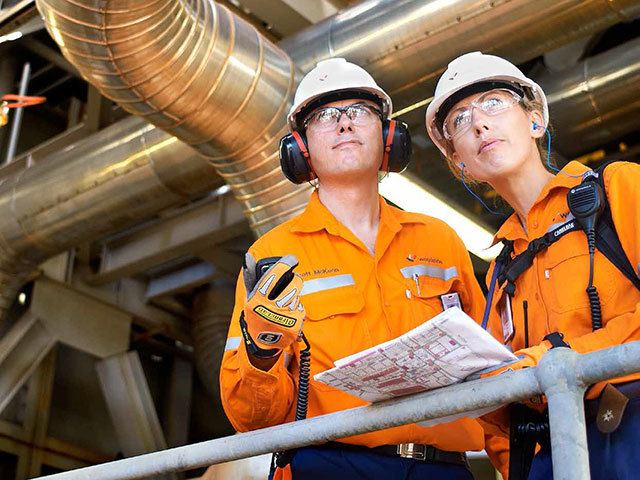
Woodside Petroleum Ltd. may look to funnel gas from the Scarborough field off Western Australia to one of its existing liquefied natural gas plants after agreeing to a $400 million deal to buy half of BHP Billiton Ltd.’s stake in the remote offshore resource.
Woodside’s purchase on Monday of a stake in Scarborough means the gas could eventually be piped to either its Pluto or North West Shelf onshore plants, according to Neil Beveridge, a Hong Kong-based analyst at Sanford C. Bernstein & Co. A plan by BHP and Exxon Mobil Corp. to use a floating LNG plant to develop gas from the Scarborough field has stalled in the past few years due to its location and low oil prices.
“Clearly they are signaling they might bring this gas onshore and the Pluto option is the obvious one,” Beveridge said in a phone interview. “There is space for new liquefaction trains” at the Pluto plant, and the option is less complex than having to deal with additional partners at the North West Shelf project.
The deal will take Woodside’s net share of the Scarborough assets, located 300 kilometers (190 miles) offshore, to an estimated 2.6 trillion cubic feet of gas out of a total of about 8.7 trillion cubic feet. Chief Executive Officer Peter Coleman signaled at the Perth-based producer’s first half results that he’d chase more deals to diversify production with more $2 billion of funding in place.
Woodside is open to both floating and onshore options for developing Scarborough gas, Coleman said in an e-mailed statement Monday.
The joint venture between Exxon, BHP and Woodside “is currently working FLNG as its preferred development option,” he said. If they “look at other development options, including an onshore tieback via Woodside-operated infrastructure, then Woodside would offer its support in understanding these opportunities.”
Woodside rose 0.9 percent to A$28.77 in Sydney at 11:52 a.m. local time Tuesday, compared with a 0.2 percent decline in the benchmark S&P/ASX 200 index.
The deal is subject to approval from Exxon, which said Monday that floating LNG was “the lead development option based on a balance of economic, environmental and social considerations.”
The company is in the “early stages” of developing the Scarborough field and expects to make a final investment decision on how to proceed before November 2020 when a five-year retention lease expires, Melbourne-based Exxon spokesman Travis Parnaby said by e-mail.
Woodside will acquire a 50 percent interest in the North Scarborough WA-62-R permit and a 25 percent interest in the main Scarborough WA-1-R permit operated by Exxon, according to a statement Monday. The Australian producer will also take over the operation of North Scarborough and get a 50 percent interest in the Jupiter and Thebe gas fields, named as the WA-61-R and WA-63-R permits.
Woodside will pay BHP $250 million once the transaction completes by year-end and a potential contingent payment of $150 million if a final investment decision is made to develop the Scarborough field. BHP will maintain a 50 percent stake in the North Scarborough, Jupiter and Thebe fields and a 25 percent holding in the Scarborough field.
Consultancy Wood Mackenzie Ltd. said it is more logical for the gas to be used at the aging North West Shelf LNG plant, which requires new gas supplies to remain at capacity early in the next decade.
“The trend appears to be utilizing existing infrastructure to lower risks and costs and we consider the lower unit cost option to be a brownfield development such as a back-fill of North West Shelf rather than a new greenfield FLNG facility,” Wood Mackenzie analyst Saul Kavonic said. “The LNG industry in Australia has had a pretty poor record of collaboration but there might be a sign now that mindset is changing.”